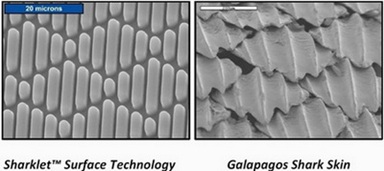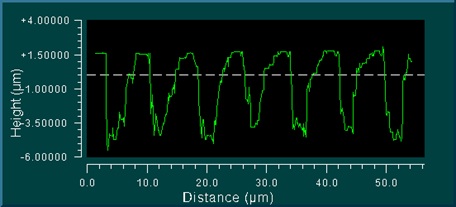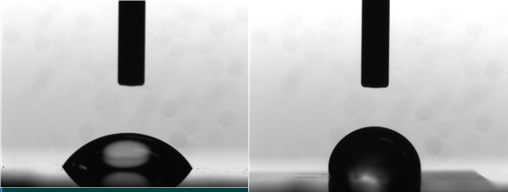This project is a partnership between Baxter International Inc. and Northwestern University. The objective of this project is to develop the science and technology base for a methodology for the creation of engineered surfaces that prevent the formation of biofilms on medical device surfaces, and therefore, reduce the risk of infection. The texturing pattern, referred to as the Sharklet [1], was inspired by the antimicrobial properties of shark skin.
Sharklet texture pattern [2]
The laser micro-machining processes [3] have demonstrated the capacity to produce this kind of pattern. Laser micro-machining is one method of surface texturing that utilizes high-intensity pico- or femto-second laser pulses to incrementally ablate, or vaporize, minute segments of the substrate material to create the desired feature geometry. A detailed description of Northwestern's state-of-the-art laser micro-machining and surface engineering system can be found here . Examples of some textures we have created are shown below:
Zygo White Light Interferometer depth view and three dimensional view of Sharklet pattern textured by laser micro-machining in stainless steel surface
Cross section of laser textured bar-shaped channels in stainless steel. Its depth and width are approximately 7 microns and 5 microns
In order to determine the influences of textured pattern, hydrophobicity tests were conducted on textured and non-textured surface. One example of contact angle of non-textured surface in stainless steel is 58.3°, and that of textured surface in stainless steel is 98°.
Samples with Sharklet surfaces and non-textured surface were tested and the biofilms were measured quantitatively for assessing survivability of biofilm bacteria using a fluorescence-based microscopy. The results established a foundation for optimizing engineered surfaces for medical devices and equipment.
Isometric view and side view of biofilm growth on Sharklet surfaces





